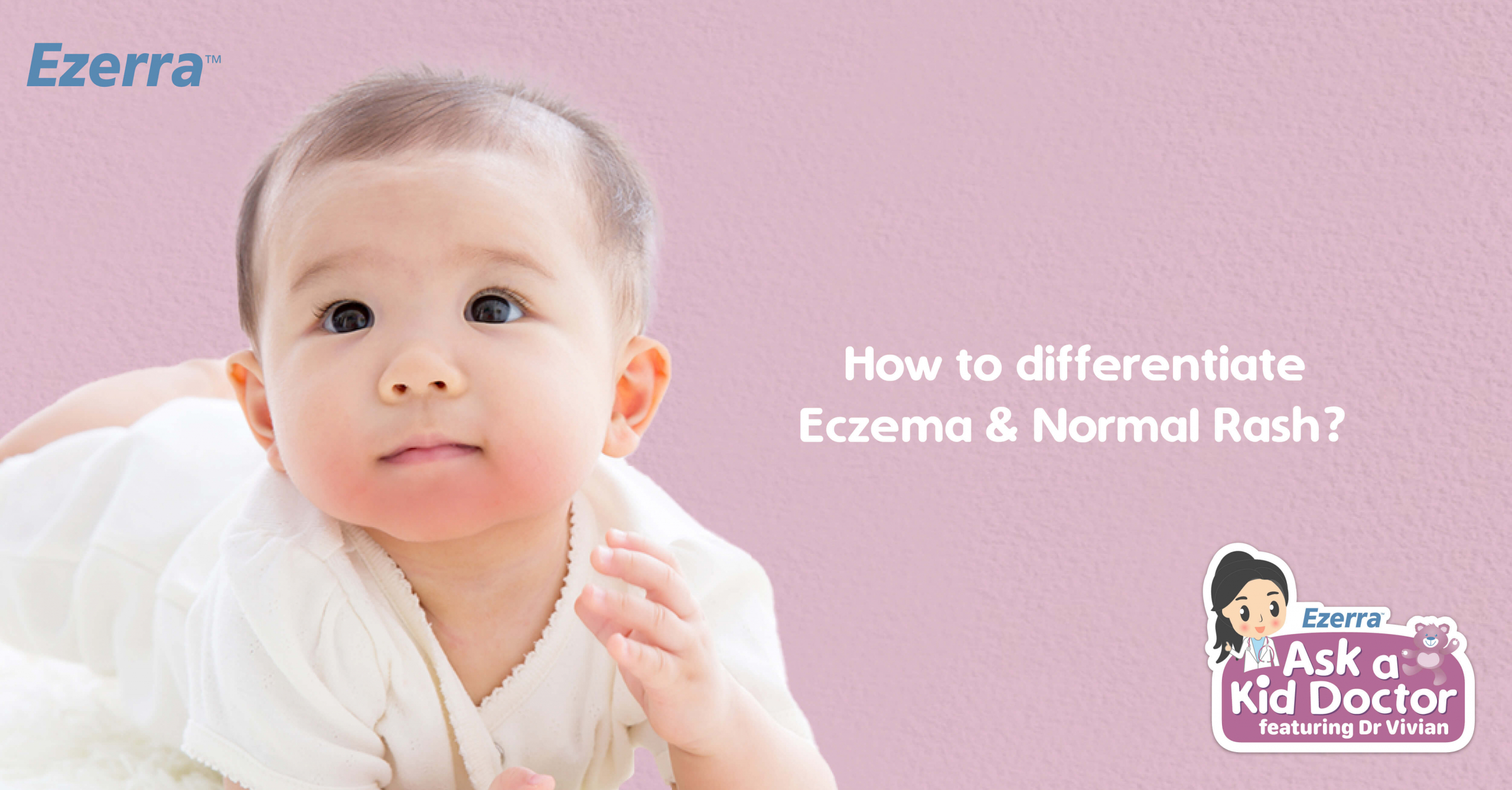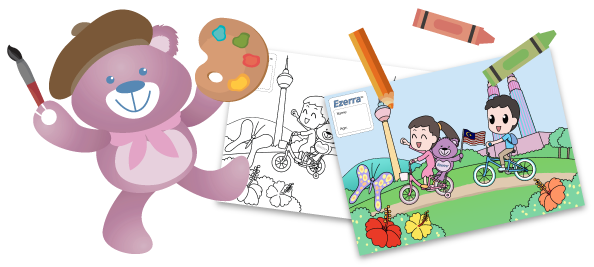Is it Eczema or Just a Common Rash? Here’s How to Tell the Difference
Is it Eczema or Just a Common Rash? Here’s How to Tell the Difference
One of the most common complaints to daily paediatric outpatient clinics is rash-related. Eczema, also known as atopic dermatitis, usually occurs during early childhood and is typically present with redness, itch and dryness and may also affect adults. The distribution of the rash varies by age group. For infants, it could appear anywhere, especially around the cheeks and neck folds. For toddlers, it’s more towards the flexural site (inner side of the elbow, behind the knee, and ankle joint) and as they grow up, the rash might move towards the extensor site (outer side of the elbow, knee, and heel).
Understanding the Causes of Eczema
The cause of eczema is still not fully understood. As for now, we believe in epigenetics, where genetic factors (such as filaggrin gene defect) and environmental factors (hygiene hypothesis, changing of the microbiota of the skin, dietary, pollutants) play a role. It will cause loss of moisturising factors in the skin, hence, reducing the natural barrier function of the skin. This will then turn the skin dry, inflamed, vulnerable to infection, oversensitive to irritants and prone to allergies.
Controlling & Treating Eczema Flare Ups
As eczema tends to recur, not only the kid’s but the parents’ physical and emotional well-being will also be greatly impacted. Treatment mainly focuses on restoring the moisture, avoiding the triggering factors, and prescribing oral antihistamine to control the itchiness. During the acute flare-up, you might need to use steroid or anti-inflammatory cream to control the flaring. When there is an infection associated, you might even need to apply antibacterial or antifungal cream on your child’s skin.
Common Rashes in Children
How can we differentiate eczema or atopic dermatitis from other common rashes besides considering the tips that we have discussed earlier? Below are some of the common conditions for the little one that I would like to share with you:
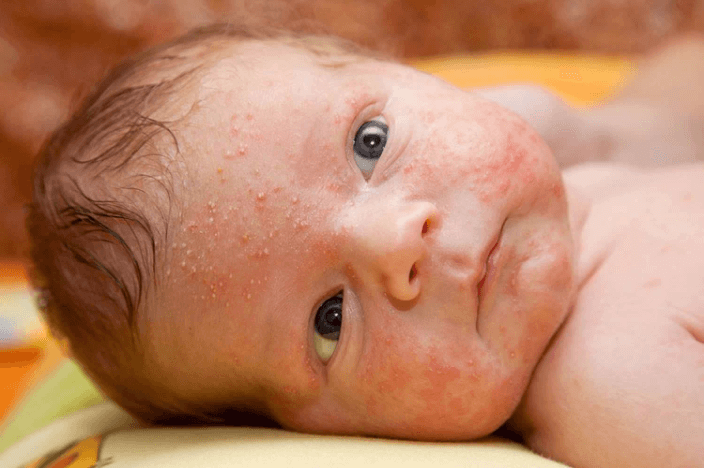
Erythema toxicum of neonatorum
Commonly seen in newborn, sometimes known as baby acne, present as white/yellowish pustules on a red base area such as the face, trunk or body, considered self-limited as it is harmless and will resolve on its own.
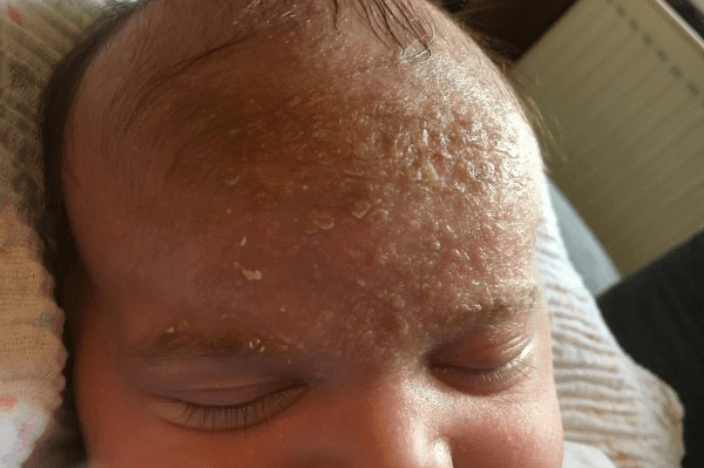
Cradle cap or seborrheic dermatitis
Red patches with greasy yellowish scale over the scalp, eyebrow, nasolabial fold, external ear canal, etc. Parents may try applying baby oil or petroleum jelly to gently rub and remove the greasy scale.

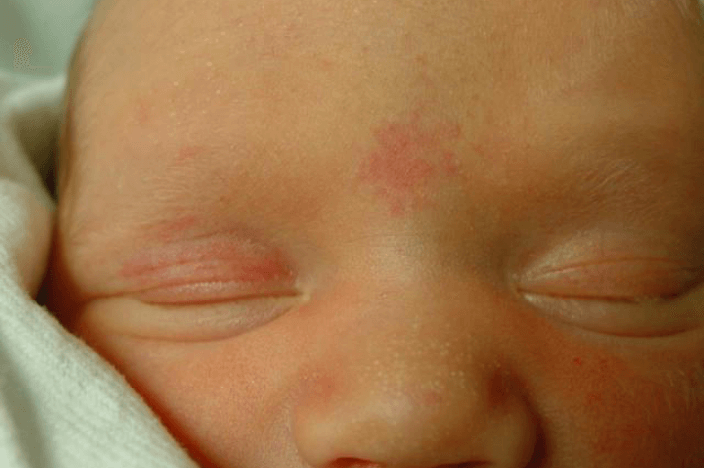
Salmon patch
The most common birthmark which is caused by dilatation of the small vessels. Typically appear as flat red rashes over the bilateral upper eyelids or the forehead. If it appears on the back of the neck, it’s known as stork bite. Self-limited as it may resolve on its own.
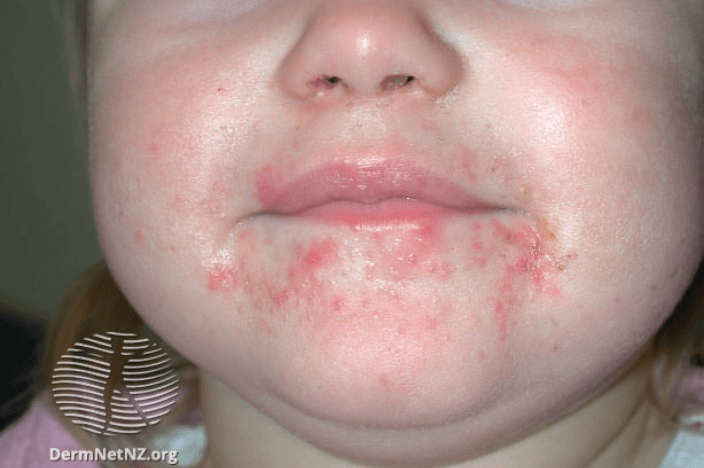
Contact or irritant dermatitis
Usually caused by milk, sweats, saliva and is common among the infants and may mimic eczema. Parents should try to remove the irritants and maintain good hygiene.

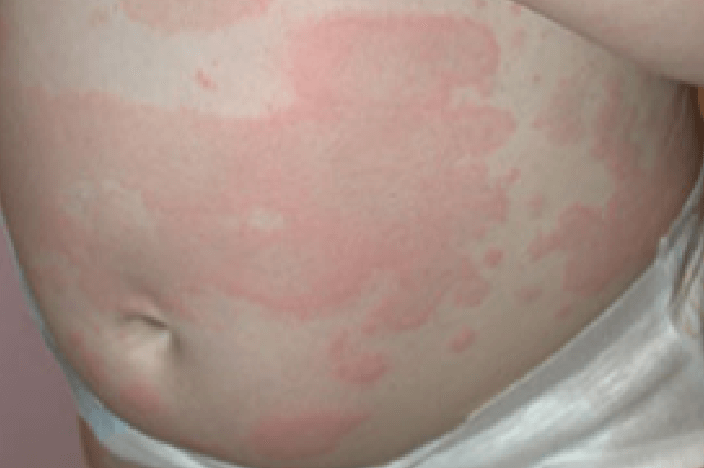
Allergic dermatitis
Can be hives which are discrete, confluent, oedematous skin, sudden onset, the appearance of raised spots on the skin akin to a chocolate chip cookie, waning and waxing, associated with itchiness. Watch for any shortness of breath, vomiting or diarrhoea, worst scenario may be anaphylactic, a life-threatening allergy reaction. Try find causative agent and eliminate from your kids.
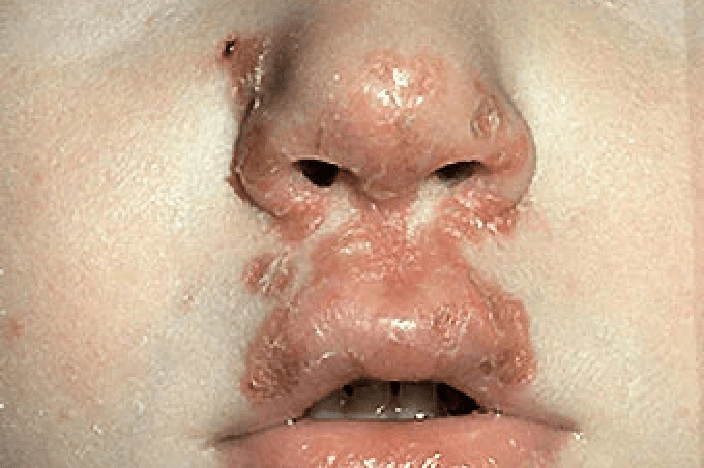
Impetigo
Honey-coloured crusted sores caused by bacteria after a skin breakdown such as a cut or even on eczema. Usually requires antibiotic cream treatment.

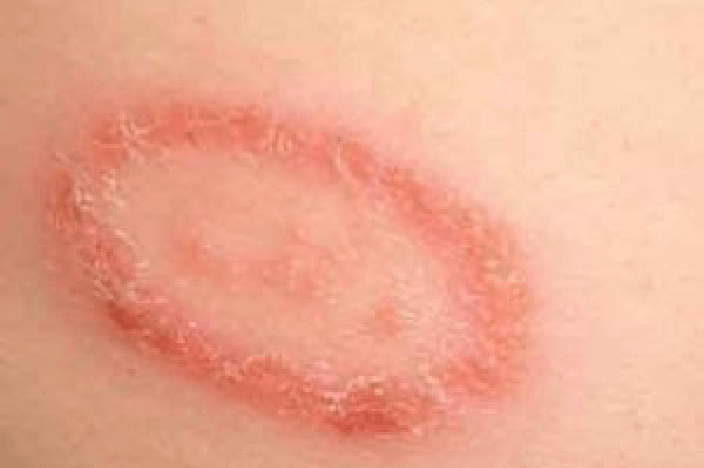
Tinea
It’s a superficial fungal infection which can happen anywhere on the body and usually appears as satellite lesion (ring-shaped) especially in our hot humid climate. Itchy and spread pass to others if sharing the same towels, clothing or bedding.
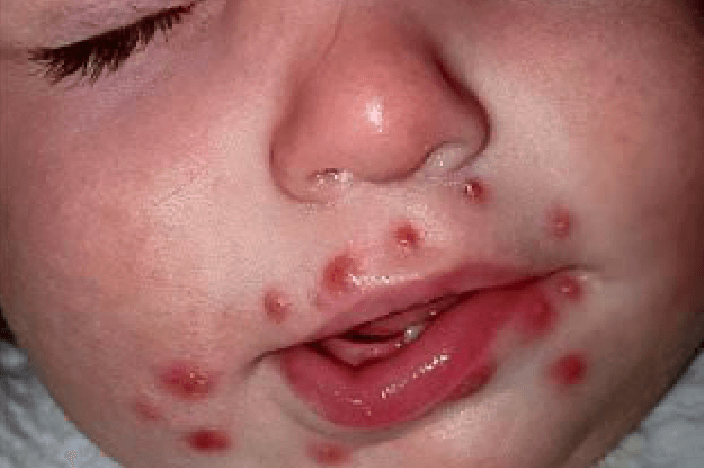
Herpes simplex infection
Typically appears as crops of vesicles with intense itch and soreness. May appear around the mouth, lips, throat or private part. It also commonly happens to eczema kids when their immune is already weaker due to their existing eczematous skin. As these may affect their feeding and kids may become crankier due to the pain, they might need to get admission for drips, pain control and antiviral treatment.

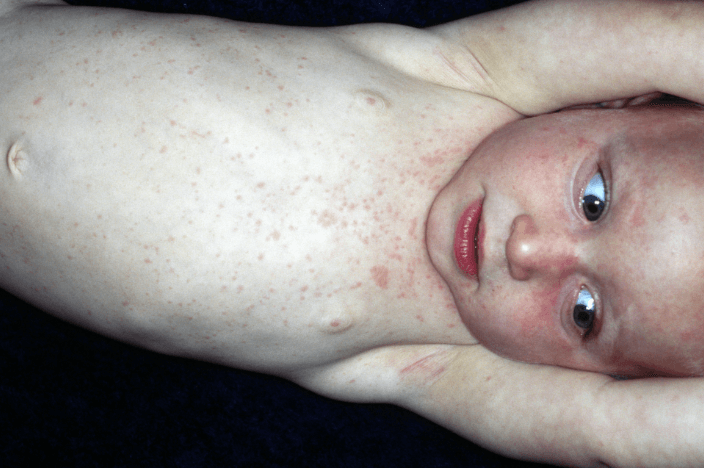
Viral exanthem
Widespread rashes caused by viral infection. For example, Roseola, also known as Sixth disease, typically causes high temperature for 2-3 days. As fever settles, the widespread rashes will appear and take 2-3 days to subside by itself. Usually affecting 6 months to 2 years old children. The spectrum and appearance of the rashes can vary from simple dots to crops of vesicles, with or without itch, pain or warmth, even with or without fever. Hence, holistic approach with detailed history taking and physical examination is the key to finding the best treatment for the rash.
Prepared by
Dr Thong Siew Peng
Consultant Paediatrician
M.D. MRCPCH (UK)
Disclaimer
The content of this article is for educational purposes only. Seek the advice of your medical provider regarding any questions or concerns you have about your baby’s specific skin condition.
Read other articles from Dr.Vivian Thong as she shared more on child eczema.
>> How Does Eczema Affect My Child’s Growth & Emotion?
>> Understanding Food Allergy vs Child’s Eczema
P/S: Proud to present our Ask a Kid Doctor series, featured consultant paediatrician and paediatric dermatologist addressing commonly asked questions on child eczema. Watch the complete series on our YouTube channel.

